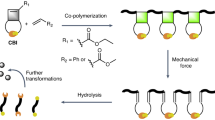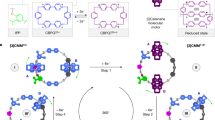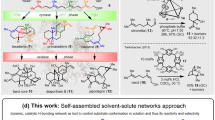Abstract
WRINCH1 recently proposed that in monolayers or globular molecules of proteins, polypeptide chains are knitted into a fabric by the bonding process which Frank2 had shown to be required in keratin to make permissible the structure Astbury deduced for it by X-ray crystallography. It is desirable to estimate the energy balance of this process, which is chemically analogous to lactam-lactim tautomerism, or to the ring closure in sugars associated with mutarotation.
This is a preview of subscription content, access via your institution
Access options
Subscribe to this journal
Receive 51 print issues and online access
$199.00 per year
only $3.90 per issue
Buy this article
- Purchase on SpringerLink
- Instant access to full article PDF
Prices may be subject to local taxes which are calculated during checkout
Similar content being viewed by others
References
D. M. Wrinch, NATURE, 137, 411 (1936).
See W. T. Astbury, Proc. Textile Inst. (1936), in the press.
L. Pauling and J. Sherman, J. Chem. Phys., 1, 606 (1933).
J. B. Speakman, Proc. Textile Inst. (1936), in the press.
See, for example, J. W. Baker, ” Tautomerism” (1934), p. 38.
W. T. Astbury and R. Lomax, J. Chem. Soc., 846 (1935).
W. T. Astbury, S. Dickinson and K. Bailey, Biochem. J., 29, 3351 (1935).
Author information
Authors and Affiliations
Rights and permissions
About this article
Cite this article
FRANK, F. Energy of Formation of Cyclol Molecules. Nature 138, 242 (1936). https://doi.org/10.1038/138242a0
Issue date:
DOI: https://doi.org/10.1038/138242a0
This article is cited by
-
Recent Advances in Cyclol Chemistry
Nature (1963)
-
Nature of the Cyclol Bond
Nature (1939)



